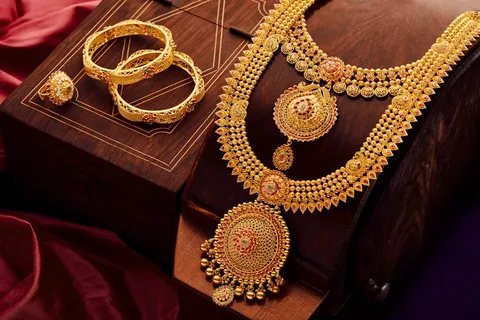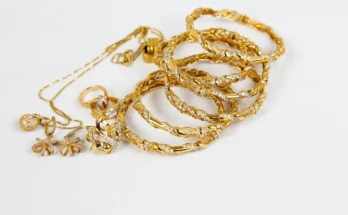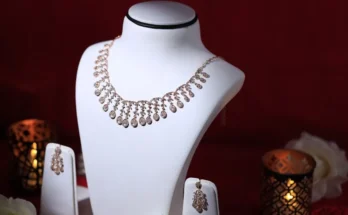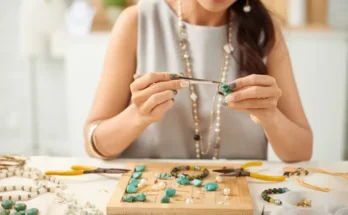Jewellery is more than a fashion statement. It carries stories, traditions, memories, and often, significant emotional and financial value. From the intricately carved gold pieces passed through generations in Indian households to the modern elegance of minimalist platinum bands, jewellery has always played a central role in human culture.
But in the contemporary world of stocks, real estate, and crypto, many are asking: should we still invest in jewellery? Can a piece of wearable beauty also serve as a reliable store of value or an appreciating asset? Or is it merely a luxurious indulgence with little long-term return?
To answer these questions, we must dive into the duality of jewellery—as adornment and as investment—while understanding the opportunities and precautions it presents.
Understanding Jewellery as an Investment:
In a financial climate where markets can fluctuate dramatically, the appeal of tangible assets like gold and precious stones remains strong. Unlike digital investments, jewellery offers physical ownership. It’s not subject to hacking, internet outages, or tech failures. You can wear it, store it, pass it on—or sell it when the need arises.
Historically, gold and other precious materials have retained value even during economic downturns. During inflationary periods, for instance, gold is often considered a “safe haven,” and since a significant portion of high-end jewellery consists of gold, it becomes more than just an accessory—it becomes a store of wealth.
However, jewellery’s value doesn’t rest solely in its weight. Artisan craftsmanship, design rarity, brand reputation, and historical provenance all add layers to a piece’s worth. A simple gold chain and a designer-stamped, limited-edition necklace might contain the same amount of gold, but their market values can differ dramatically. This artistic and cultural value can make jewellery a lucrative form of investment—if chosen wisely. Pieces from well-known brands like Cartier, Tiffany & Co., or Van Cleef & Arpels often appreciate over time, especially when kept in pristine condition.
The Pros of Investing in Jewellery:
-
Beauty Meets Utility
One of the strongest arguments for jewellery investment is its dual nature. Unlike stocks or bonds, jewellery can be worn and enjoyed while also serving as an asset. You don’t keep it locked away to gain value; you celebrate it—at weddings, parties, or just because you feel like it.
This emotional value often makes jewellery a less intimidating investment, especially for those unfamiliar with traditional finance. The idea that your money is tied up in something beautiful, portable, and personally meaningful is compelling.
-
Global Acceptance and Liquidity
Jewellery, particularly gold-based, has global liquidity. Gold jewellery can be traded, sold, or pawned in virtually any part of the world. In many cultures, it is still used as a form of emergency savings. It is accepted, recognized, and often revered across markets.
This means that in times of personal financial difficulty or geopolitical instability, jewellery can offer fast access to funds without complex paperwork or long processing times.
The Cons and Caveats of Jewellery Investment:
-
Hidden Costs and Declining Value
Despite its advantages, jewellery is not a guaranteed appreciating asset. Unlike gold bars, which are valued based on pure weight and purity, jewellery includes additional costs—craftsmanship, retail mark-up, brand premium, and taxes. When you sell it, buyers often discount these extras, paying only for the base metal and stone value.
This means that unless you’re dealing in collectible or antique pieces, the resale value of modern jewellery might fall short of the purchase price. If you’re buying jewellery at retail prices with the hope of selling it for profit, you may be disappointed.
-
Volatility in Trends
Another critical issue is the subjectivity of style. What’s fashionable today may be outdated tomorrow. While classic pieces retain value better, trendy designs can lose appeal—and, therefore, demand—quickly. Unlike gold or diamonds in raw form, the desirability of a particular design is harder to predict or quantify.
If your investment strategy includes jewellery, it’s important to think long-term and prioritize timeless designs that hold value beyond fleeting trends.
Precautions Before Investing in Jewellery:
-
Know What You’re Buying
Education is your best defense when investing in jewellery. Understand the purity of gold (measured in karats), the four Cs of diamonds (cut, clarity, color, and carat), and how gemstones are graded. Ask for certification from reputable sources such as the Gemological Institute of America (GIA) or the International Gemological Institute (IGI).
Avoid impulse purchases or pieces that are marketed aggressively with inflated claims of value. If an item’s price seems too good to be true, it probably is.
-
Choose Trusted Sellers
Whether you’re buying from a jeweller, an auction house, or a private seller, reputation matters. Go for businesses with a proven track record, transparent pricing, and clear return policies. Reviews and referrals from trusted sources can guide you to safer purchases.
For investment-grade pieces, documentation is crucial. Always get a proper invoice, certificate of authenticity, and appraisal documentation for insurance purposes.
-
Insure Your Jewellery
Like any valuable asset, jewellery should be protected. Theft, loss, or damage can wipe out your investment if it’s not insured. Most home insurance policies offer riders or add-ons for valuables. Alternatively, specialized jewellery insurance providers offer tailored coverage with options for worldwide protection.
Don’t wait until something happens. Insure it the moment you purchase, and keep documentation stored safely—both digitally and physically.
Should You Invest in Jewellery?
If you’re seeking pure financial return, there may be better options than jewellery—like mutual funds, index stocks, or real estate. These typically offer more predictable growth, better liquidity, and easier valuation. However, if you value tangible assets, enjoy beauty and design, and are looking for a flexible, wearable form of wealth with cultural significance, jewellery can absolutely play a role in your investment strategy.
Think of it not as a stock portfolio replacement, but as a supplementary asset—part luxury, part legacy.
Jewellery often holds deep personal significance. It celebrates milestones, honors traditions, and captures memories. Its return can’t always be measured in cash. In some cases, that emotional and cultural return may outweigh fluctuating market prices. Especially in communities where gifting or inheriting jewellery is a norm, these pieces carry not just monetary, but symbolic value. They become heirlooms—stories cast in gold and stone.
Conclusion:
Jewellery is one of the few investments that can be felt, worn, admired, and passed down. While it’s not a foolproof path to riches, it is a unique blend of emotion, culture, and value that no digital currency or real estate deed can replicate.
If approached with knowledge, caution, and a long-term perspective, jewellery can be a shining part of your wealth portfolio. So, whether you’re buying for love, legacy, or liquidity, let your decisions reflect not just sparkle—but strategy.




